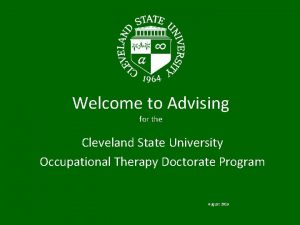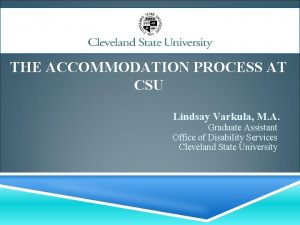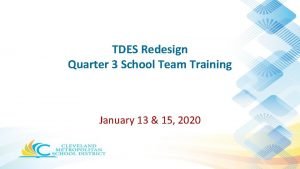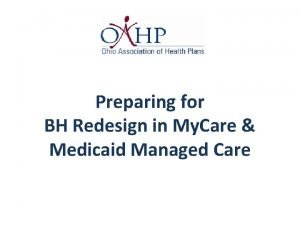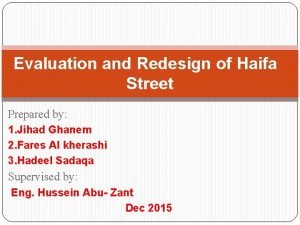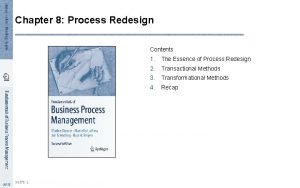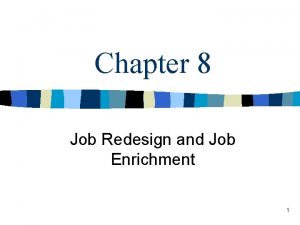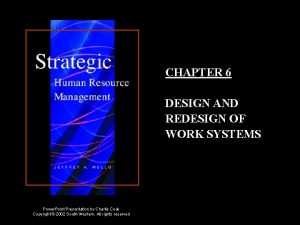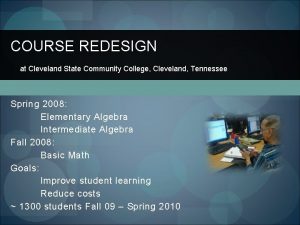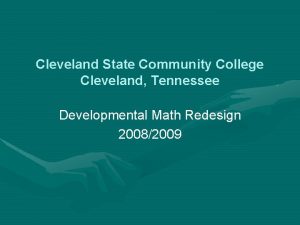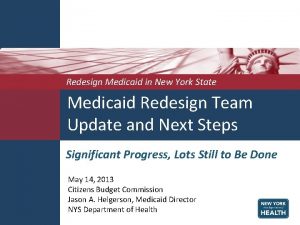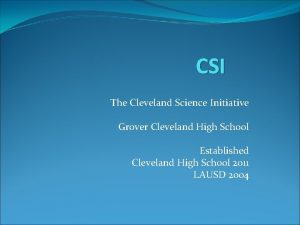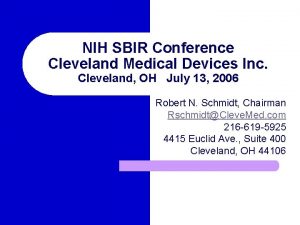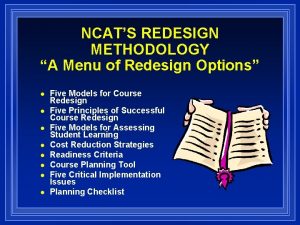Do The Math Cleveland State Math Redesign Cleveland










- Slides: 10

Do The Math! Cleveland State Math Redesign Cleveland State Community College Cleveland, Tennessee Presented By: Karen Wyrick Annual Enrollment: Main Campus – 2700 Course Athens – 400 Vonore - 50 Enrollment No. of Sections Size Basic Math 140 8 17 -20 Elementary Algebra 480 25 20 – 25 Intermediate Algebra 580 30 20 - 25

We Have A Problem • The Problem – Developmental Math – – High failure rates Low attendance Good students stuck for 1 – 2 semesters Roadblock to student success • The Solution – Course Redesign – – Try something new Completely different approach Utilize online learning systems Remove roadblock to success • TBR Involved In System-Wide Redesign

Why Stop There? Elementary Algebra Developmental Intermediate Algebra Math Basic Math College Level Math Spring 2008 Fall 2008 College Algebra Statistics Finite Math Fall 2008 Precalculus II Applied Calculus Fall 2009 Location, Location 2 Labs, 4 Classrooms • 60 -Computer lab in Cleveland, 35 -Computer lab / classroom in Athens • 4 Computer classrooms – 3 in Cleveland, 1 in Vonore

Our Little Twists • Mini Modules* – – Each course consists of 10 – 12 mini-modules* 1 hour class meeting each week – students work in class* 2 hours work outside class each week – at least 1 hour in lab Students expected to complete at least one module each week* • Points for Everything – 10% Attendance Grade - class and lab attendance, module completed – 30% Homework Sets – 2 to 5 sections per module – 60% Quiz and Exam Grades – 1 quiz each module, 2 exams each course • Mastery Learning – – Students must complete every homework set (70% or better) Students must pass every module quiz and exam (70% or better) Students must pass attendance grade (70% or better) Students may take each quiz and exam multiple times *Our Little Twists On NCAT Recommendations

Teaching Old Dogs New Tricks Traditional Faculty Role New Faculty Role • • • • • Dispense information in lectures Covering material 15 hours of contact time Teaching 5 class sections Help students outside class? 7. 5 office hours each week Prep time a burden Grading at home Faculty focused on lectures Assist students with learning Tracking student progress 20 hours of contact time Teaching 10 class sections 10 lab hours each week 5 office hours each week Prep time eliminated 100% online grading Faculty focused on student success

Attitude Adjustments Before Redesign After Redesign I want my lecture! I like this! Study night before exam Weekly homework, quiz What do I need to pass? I want an A! Teachers I want my lecture! This works! Class Low attendance Median attendance grade 88% Don’t do homework Average homework grade 97% Not engaged in class Come to class early, stay late Students

But Did It Help? • Developmental Math – Success rate in developmental math courses went from 54% to 72% – Intermediate Algebra had a 79% success rate in Fall 2008 • College Level Math – Success rate in three redesigned courses stayed same at 72% – College Algebra improved, Finite Math stayed same, Statistics declined • Developmental Students In College Level Math – They had a higher success rate (81%) than the other students (70%) – They also had a higher math GPA (3. 15) than the other students (2. 94) • Continuous Enrollment Plan – Students finishing one course can start in the next one immediately – 46 students completed multiple courses, 2 completed three courses

More Bang for the Buck • One Room Schoolhouse – Different classes can meet in the same room at the same time – This strategy offers solutions for low enrollment courses – Course offerings expanded due to this strategy • More Sections, Lower Class Size – One hour class meetings allow for more sections to be offered – Classes are limited to 22 students, most classes between 15 – 20 students – Scheduling roadblocks reduced due to increased number of sections • Productivity Up, Costs Down – Faculty productivity increased by 23% as a result of redesign – Adjunct faculty eliminated in Math / Developmental Math as of Spring 2009 – Costs reduced by approximately $50, 000/year as of Fall 2009

Caution, Speed Bumps Ahead • Stumbling Blocks Will Arise – There are no exceptions to this rule • There Is An Adjustment Period – This applies to both students and faculty • Redesign Is A Process – Most redesign projects take years to complete • Tweaking Is Essential – See what works, change what doesn’t • In The End, Improvement Will Occur – Most students will do better with a new approach

And Finally… We wish to thank TBR, NCAT, and FIPSE. This project has benefited our students. Karen Wyrick kwyrick@clevelandstatecc. edu John Squires, Math Chair jsquires@clevelandstatecc. edu Funded by FIPSE Dr. Paula Myrick Short, Principal Investigator Vice Chancellor for Academic Affairs Tennessee Board of Regents
